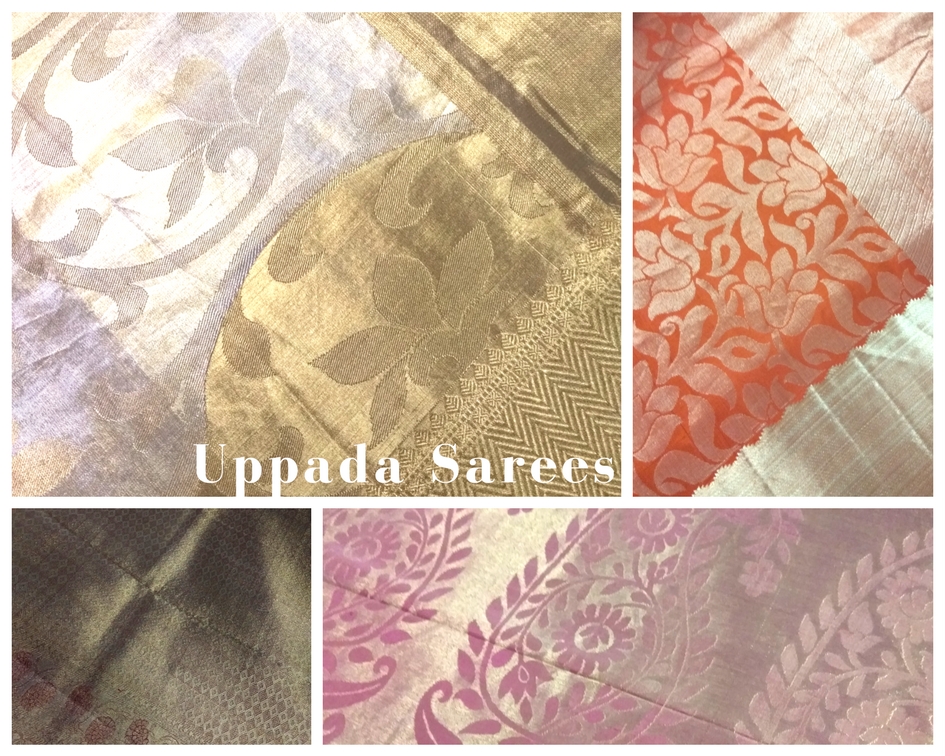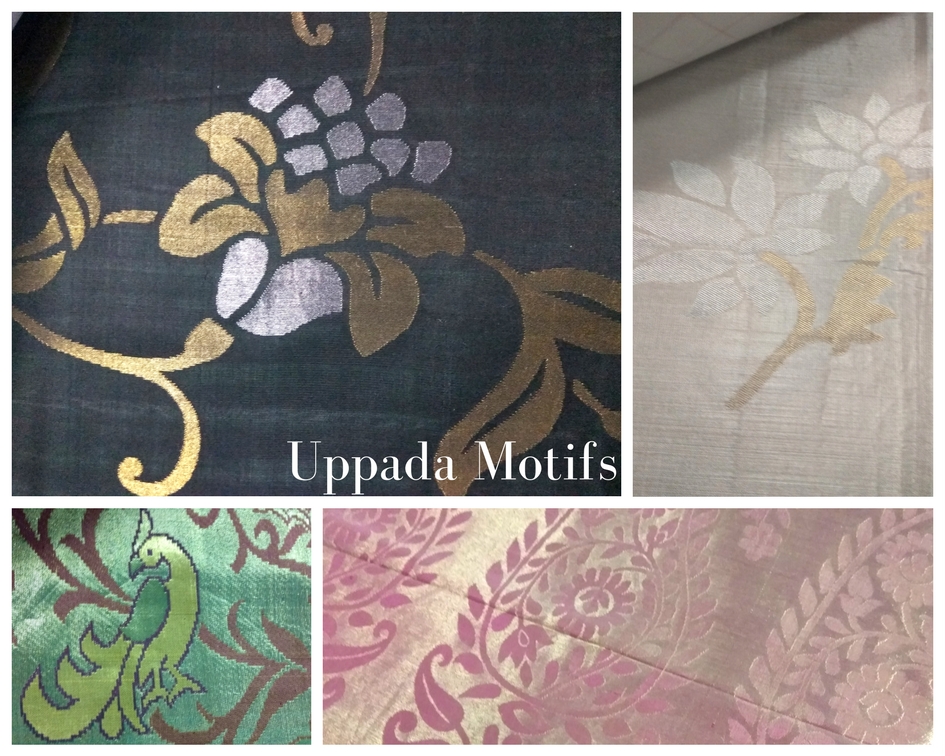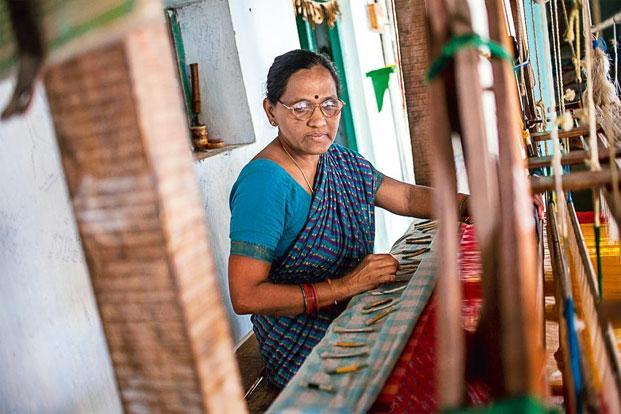South Indian Expertise in Sarees
South India- its tradition studded culture and brilliantly made sarees! Exported to most parts of the world, these sarees are no less than a legend. Like most other Indian textiles, they graduated from cotton to silk or a cotton-silk mix after the discovery of Chinese Silk. Since then, saree communities have flourished! Their expertise combined with some acquired technical knowledge about materials and commerce brought in a revolutionary approach in the Saree world!
Uppada Sarees

 Uppada sarees originated in the town of Uppada in Andhra Pradesh. These sarees are made of cotton and silk, and also a combination of both. This requires weavers 10-60 days to make one of these light beauties! Now that they have their own G.I. status, they have an authenticity about their quality standard. This is why Uppada sarees employ the finest silk from Bengaluru. However, a visit to the town of Uppada will reveal a humble mindset. Weavers families work for hours and engage even the younger generations in the weaving process. Exporters help sell their produce in larger cities at a high price but most of the weavers get relatively smaller shares in the profit. But the weavers seem content with making ends meet. They don’t seem to desire higher end pleasures.
Uppada sarees originated in the town of Uppada in Andhra Pradesh. These sarees are made of cotton and silk, and also a combination of both. This requires weavers 10-60 days to make one of these light beauties! Now that they have their own G.I. status, they have an authenticity about their quality standard. This is why Uppada sarees employ the finest silk from Bengaluru. However, a visit to the town of Uppada will reveal a humble mindset. Weavers families work for hours and engage even the younger generations in the weaving process. Exporters help sell their produce in larger cities at a high price but most of the weavers get relatively smaller shares in the profit. But the weavers seem content with making ends meet. They don’t seem to desire higher end pleasures.
Jamdani technique
Something that fascinates people about Uppada weaving is that the weavers still use the 300-year old Jamdani technique. This Persian technique originated in Dhaka, Bangladesh. It was very famous earlier but saw a sharp decline in the 19th Century due to the Industrial Revolution. Uppada silk brought it back in 1988. Jamdani silk was used by Islamic rulers. Owing to a Muslim belief that silk to be worn cannot touch the skin, a special type of arrangement called the mashru was introduced. Today, Jamdani is commonly seen in Bengali households. And despite the intense labour and time it requires, Uppada weavers still follow it. Their emotional attachment and the richness of the fabric it weaves cannot be replaced by the modern Jacquard!
How is the Uppada Saree made?
The making process is as simple as the people in Uppada.
- The yarn to be used is washed and dyed into a pre-decided colour by dipping into a boiler of that colour. The yarn is turned to get a uniform tone.
- After the dye has dried, the fabric is
 starched to provide some extra strength.
starched to provide some extra strength. - The yarn is then polished.
- A charkha is used to thin out the polished yarn into threads.
- Lastly, it is loaded onto the looms which are fitted into frames and pedalled by the weaver to weave the saree!
Feel of the Saree
The warp and the weft of these sarees keep interchanging between cotton and silk. Different cotton and silk combinations provide different feels to the saree. Cotton makes the saree feel soft and silk gives it a smooth, luxurious feel. Weavers also employ the use of pure lace and zari dipped in gold or silver. These sarees are known to be so lightweight that they can be folded to fit inside a matchbox!


Published by